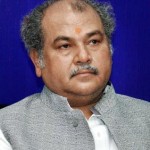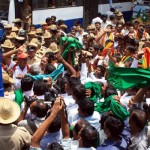
Legend says Mysore’s golden throne belonged to the Pandavas
The golden throne at Mysore Palace, the cynosure of all eyes during Dasara celebrations here, was reassembled on Thursday.
The throne is an integral part of the Mysore royal family’s festivities. Maharajas used to sit on the throne and conduct durbar during the days of the monarchy.
But since the abolition of principalities, the symbolic act of ascending the throne and holding the durbar was continued by Srikantadutta Narasimharaja Wadiyar, the scion of the royal family, till his death last December.
In his absence, the royal sword will be placed on the throne, described by many as a work of art, and worshipped by priests. In the run up to the festivities, the priests conduct specific rituals associated with it and it is then assembled.
Jaganmohan Palace’s curator Mr.Narasimha told The Hindu: “After the completion of the rituals and chanting of the vedic hymns, the priests sanctified the throne and by sprinkling holy water and the golden umbrella studded with precious stones, steps leading to the main seat, arms rest etc. were assembled part by part.”
The origin of the golden throne is shrouded in mystery, with a number of legends telling us different stories about how it came to be.
Many theories
According to one, the throne belonged to the Pandavas. But as per other, the throne belonged to the rulers of Vijayanagara Empire and was retrieved by Harihara I, one of the empire’s founders, in the 14 Century and passed on to Srirangaraya, their governor in Srirangapatana.
Raja Wadiyar, who was one of the feudatories of the Vijaynagara empire, came to power in Srirangapatana in 1610 and the throne has remained with the Wadiyars since then.
However, according to another theory, Mughal emperor Aurangzeb gifted the throne to Chikkadevaraja Wadiyar around 1700.
The throne is displayed for the public during Dasara, and is dismantled afterwards.
(The Hindu)


